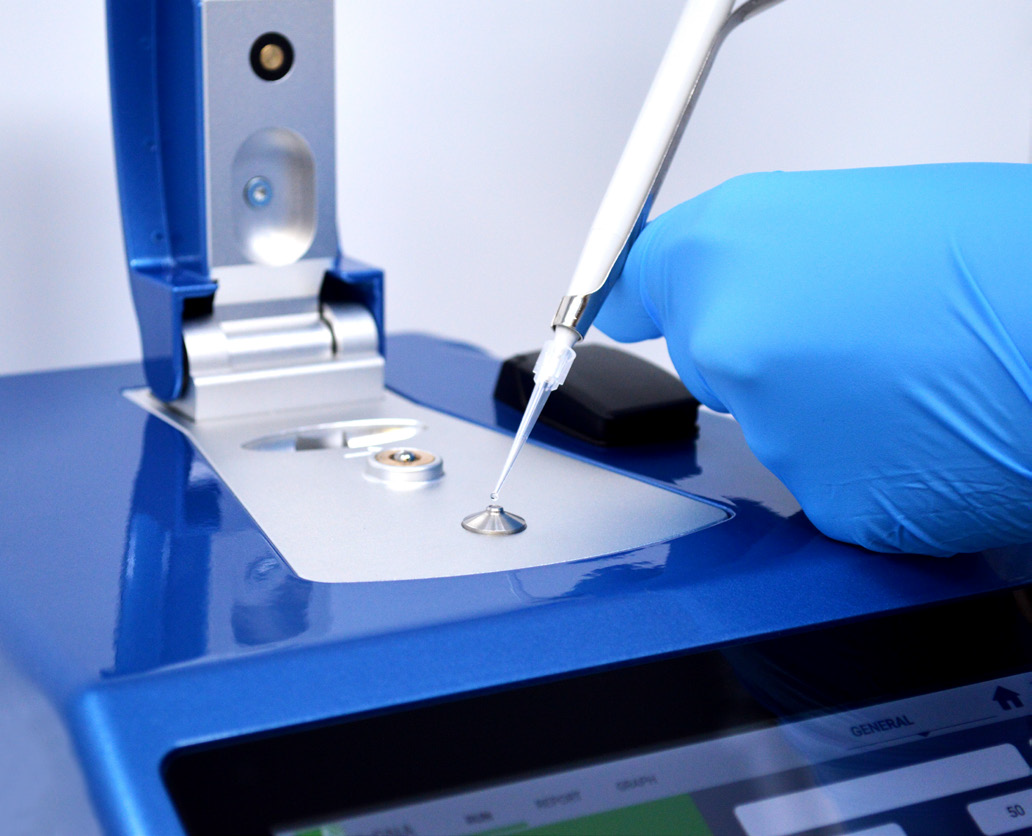Sponsored Content by DeNovix Inc.Reviewed by Louis CastelFeb 4 2024
The DeNovix™ DS-11 Series Spectrophotometer / Fluorometer facilitates precise absorbance and fluorescence quantification over an extensive dynamic range.
The dual-mode spectrophotometer features SmartPath™ technology, ensuring reproducible and accurate measurements for both cuvette and 1 μL absorbance modes.
The proprietary optical core of the fluorescence component uses LED excitation sources and highly sensitive photodiodes capable of identifying minimal fluorescence levels across four wavelength ranges.
Download this free eBook to discover everything there is to know about absorbance and fluorescence quantification.
Download the eBook
Basics of absorbance measurements
UV-Vis absorbance measurements are a standard method for quantifying purified biomolecules in life science laboratories. This method enables the rapid identification of molecules by analyzing their absorbance profiles at specific wavelengths.
Absorbance additionally indicates sample contamination. The shape of the absorbance spectrum will vary depending on the presence of other molecules that absorb at or close to the same wavelengths as the target molecule.

Image Credit: DeNovix Inc.
Basics of fluorescence measurements
Fluorophores are molecules that absorb light at a specific wavelength (excitation wavelength) and emit light at a different wavelength (emission wavelength). The structures of specific fluorophores can be modified to fluoresce only when bound to a specific molecule, such as double-stranded DNA.
Fluorescence assays utilize this binding specificity to establish a direct correlation between the quantity of fluorescence emitted by a sample and the concentration of the target biomolecule in solution.
By combining fluorophore with a sample of known concentration and measuring the Relative Fluorescent Units (RFU), a standard curve illustrating the correlation between concentration and measured RFU can be plotted.
The emission of the same fluorophore, bound to unknown samples, can be plotted against the standard curve to establish the sample concentration.
Advantages of absorbance and fluorescence methods
Absorbance
- Reagents are not necessary. The measured absorbance is a direct result of the target molecule absorbing light at a known wavelength.
- The concentration of the target molecule is directly proportional to the quantity of absorbed light.
- Information on potential sample contamination can be obtained (see here for an explanation of purity ratios).
Fluorescence
- High Sensitivity: Thanks to the high extinction coefficient of the fluorophore, fluorescence assays exhibit remarkable sensitivity, enabling the detection of molecules at concentrations hundreds of times lower than those detectable through traditional absorbance.
- Specificity: The binding properties of the fluorophore contribute to the high selectivity of these methods for specific molecules. These assays are well-suited for samples containing contaminants capable of interfering with absorbance measurements.
Comparing absorbance and fluorescence results
When comparing results from fluorescence-based methods to absorbance-based methods, it is crucial to consider the specificity of each method. For instance, absorbance measurements at 260 nm are not selective for dsDNA, as ssDNA and RNA absorb at 260 nm.
An absorbance measurement at 260 nm will measure all the nucleic acids and any contaminants (including proteins) present within a sample. This remains true for all measurement types and is not just limited to nucleic acids. Absorbance methods are suitable for measuring pure samples for this reason.
In contrast, fluorescence assays exhibit high specificity for a particular analyte, including, but not limited to ssDNA, dsDNA, RNA, or proteins. Typically, the concentration of a sample measured by absorbance is higher than the concentration measured by fluorescence methods.
Summary
Absorbance and fluorescence are distinct yet complementary methods for the quantification and quality assessment of samples. Quantitation through absorbance, utilizing the microvolume or cuvette-based capabilities of the DS-11 Series, is perfect for the accurate and rapid measurement of purified samples, including proteins and nucleic acids. Absorbance also provides insights into potential contamination.
Using a secondary reporter fluorophore, fluorescence quantitation is well-suited for samples below the detectable threshold for UV-Vis absorbance. In some instances, fluorescence quantitation methods can also detect samples in the presence of contaminants or buffer elements that could disrupt UV-Vis measurements.
The DS-11 Series Spectrophotometer / Fluorometer combines UV-Vis and fluorescence capabilities within a compact benchtop design. DeNovix provides numerous instrument models that offer various combinations of microvolume absorbance, cuvette absorbance, and fluorescence measurement modes.
Both absorbance and fluorescence methods utilize the same EasyApps™ software and sample export features, streamlining data analysis for a rapid, easy, and intuitive process.
Download the eBook
About DeNovix, Inc.
WELCOME TO DENOVIX
Award-Winning products for Life Science
Our multi-award winning products include the Reviewers’ Choice Life Science Product of the Year and Platinum Seal awarded- DS-11 Series Spectrophotometer / Fluorometer and CellDrop™ Automated Cell Counter. CellDrop is the first instrument of its kind to Count Cells Without Slides. These powerful instruments integrate patented DeNovix technology with easy-to-use software designed by life scientists for life scientists.
Researchers tell us they love the industry leading performance, smart-phone-like operation, and the flexible connectivity of the instruments. When support is needed, the DeNovix team is here to help. DeNovix received the prestigious Life Sciences Customer Service of the Year based on independent reviews posted by scientists worldwide!
CellDrop: Sustainable laboratory product of the year
The CellDrop Automated Cell Counter has been awarded Sustainable Laboratory Product of the Year in the SelectScience® Scientists’ Choice Awards®!
CellDrop’s patented DirectPipette™ technology distinguishes it as the only cell counter to eliminate the need for cell counting slides. This innovation saves millions of single-use plastic slides from use and disposal each year.
Sponsored Content Policy: News-Medical.net publishes articles and related content that may be derived from sources where we have existing commercial relationships, provided such content adds value to the core editorial ethos of News-Medical.Net which is to educate and inform site visitors interested in medical research, science, medical devices and treatments.